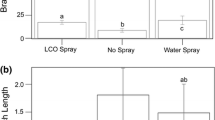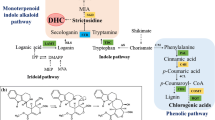Abstract.
Alfalfa (Medicago sativa L.) suspension cultures respond to yeast elicitors with a strong alkalinization of the culture medium, a transient synthesis of activated oxygen species, and typical late defence reactions such as phytoalexin accumulation and increased peroxidase activity. The alkalinization reaction as well as the oxidative burst were also observed when tobacco (Nicotiana tabacum L.) cell-suspension cultures were treated with yeast elicitors. Depending on the degree of polymerization, N-acetyl chitin oligomers induced the alkalinization response in both plant cell-suspension cultures, while only tobacco cell cultures developed an oxidative burst. Suspension-cultured tobacco cells responded to Sinorhizobium meliloti nodulation factors with a maximal alkalinization of 0.25 pH units and a remarkable oxidative burst. In contrast, addition of Sinorhizobium meliloti nodulation factors to suspension-cultured alfalfa cells induced a slight acidification of the culture medium, instead of an alkalinization, but no oxidative burst.
Similar content being viewed by others
Author information
Authors and Affiliations
Additional information
Received: 23 November 1998 / Accepted: 23 June 1999
Rights and permissions
About this article
Cite this article
Baier, R., Schiene, K., Kohring, B. et al. Alfalfa and tobacco cells react differently to chitin oligosaccharides and Sinorhizobium meliloti nodulation factors. Planta 210, 157–164 (1999). https://doi.org/10.1007/s004250050665
Issue Date:
DOI: https://doi.org/10.1007/s004250050665




